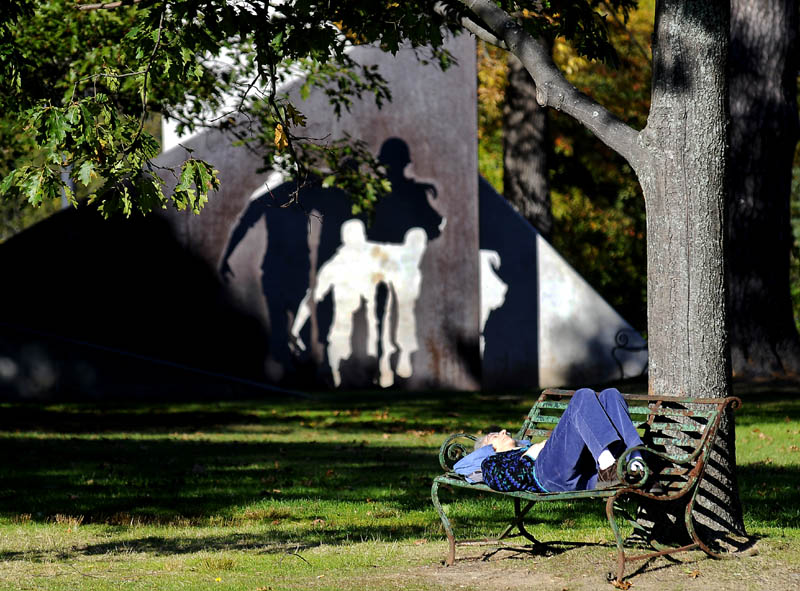AUGUSTA — Lawmakers who support an effort to bring edible landscaping to historic Capitol Park said Monday it will help ease hunger, raise awareness of the importance of agriculture and show support for local farmers.
“Perhaps the highest and best moral use of our land when our fellow citizens are hungry is the production of food,” said Rep. Brian Jones, D-Freedom, who cited statistics that show nearly 15 percent of all Mainers are deprived of adequate food.
Rep. Craig Hickman, D-Winthrop, sponsor of L.D. 474, told members of the State and Local Government Committee that he envisions blueberry bushes, sage, chocolate mint, sweet potatoes, okra and collard greens growing in the park because they produce food and beautiful flowers. He assured members of the committee that seeds have already been donated by Paris Farmers Union, that volunteers will maintain the gardens, and that he’s not worried about vandalism.
He also said that planting aromatic herbs will help keep animals from destroying the gardens.
“I haven’t had a problem with deer on my farm for 10 years,” he said. “Animal destruction will be minimal, I have no doubt.”
Hickman distributed a map of Capitol Park showing a shrub garden on the northwest side and a vegetable garden on the southwest side.
Rep. Allen Nadeau, R-Fort Kent, asked if the state would assume additional liability if someone picked food out of the park and became sick. Hickman said he thought that would be unlikely and suggested that a sign be posted to tell people the state could not be held liable in the event of illness.
“People have been eating food that comes up from the earth forever,” he said. “I can’t see a blueberry bush causing someone harm.”
Capitol Park — described in a legislative handbook as “the earliest-known consciously designed public ground in Maine” — dates to 1827, which is the year in which the Legislature established Augusta as the state capital. Lawmakers in that year set aside $500 to pay for improvements to the park, including “forest trees.”
In 1920, the state hired Frederick Law Olmsted’s firm to plan the landscaping for the park, the State House grounds and the Blaine House. In more recent times, the plan has been updated, and state lawmakers have provided money to pay for new trees, improved walkways and better benches.
Other states have used public land for similar edible landscaping projects, said Rep. Matthea Daughtry, D-Brunswick. In 2009, Vermont planted chard, beets, kale, collards and red lettuce near the Capitol building in Montpelier, she said.
The bill will be considered by the committee in a work session in the coming weeks.
Susan Cover can be contacted at 621-5643 or at:
scover@mainetoday.com
Send questions/comments to the editors.


